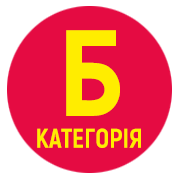DIFFERENCES IN SPECIAL PHYSICAL FITNESS OF YOUNG ATHLETES OF VARIOUS AGE IN TAEKWONDO ITF
DOI:
https://doi.org/10.32782/olimpspu/2024.1.11Keywords:
young athletes, special physical fitness, single kicks, combos, control, differences, ITF taekwondo.Abstract
The need to improve the physical training of athletes in ITF Taekwondo, to solve which it is necessary to find out the existing level of special physical training of young athletes in this sport has been identified. The aim of the research is to identify the level of special physical fitness and its differences between young athletes of different age groups of ITF taekwondo. Materials and methods. The following methods were used: theoretical analysis, generalization of data from references and the Internet, pedagogical testing, methods of mathematical statistics. Special physical fitness of the athletes was determined with the help of control exercises: single punches and kicks, combinations of two (dolochagi-cross and yop chagi-hook) and three (hook-dolkyo chagi and jab-yop chakgi-hook) kicks with involvement of arms and legs for 10 and 120 s. Results. For the majority of control exercises from the special physical training of young athletes in ITF taekwondo, a gradual increase in results from the youngest group (7–9 years old) to the oldest (15–17 years old) is observed. Laws have been revealed according to which in all control exercises, the youngest athletes (ages 7–9) are inferior to their older colleagues; in most of the control exercises, taekwondo players aged 15–17 dominate by the results over other age groups (р≤0.04); there are no significant differences between taekwondo players of the 10–11 and 12–14 age groups; with increasing age, ITF taekwondo athletes are more likely to gain an advantage in special (speed and power) endurance events and in control exercises with single kicks and combinations of three kicks for 120 s. Conclusions. In neither control exercises, statistically significant differences between the results of taekwondo players of the two age groups of 10–11 and 12–14 years were found. They are within the age range that was analyzed and having, for the most part, statistically probable differences frbetweenom athletes aged 7–9 and 15–17, remain a certain buffer (reserve) zone. We believe that for athletes of the specified age, it is necessary to implement targeted training effects on physical training in ITF Taekwondo.
References
Вплив занять з елементами тхеквондо на розвиток координаційних здібностей дітей молодшого шкільного віку / С. Воропай та інші. Спортивний вісник Придніпров’я. 2016. № 1. С. 164–169.
Данищук С., Яців Я., Гнатчук Я. Обґрунтування параметрів контролю спеціальної фізичної підготовленості спортсменів віком 12–13 років у таеквон-до ІТФ. Вісник Кам’янець-Подільського національного університету імені Івана Огієнка. Серія «Фізичне виховання, спорт і здоров’я людини». 2022. Вип. 27. С. 165–173.
Данищук С., Яців Я., Гнатчук, Я. Диференціація фізичної підготовки спортсменів віком 12–13 років у таеквон-до ІТФ: перспективи досліджень. Науковий часопис Національного педагогічного університету імені М.П. Драгоманова. Серія 15 «Науково-педагогічні проблеми фізичної культури (фізична культура і спорт)». № 10 (155). С. 65–70. https://doi.org/10.31392/NPU-nc.series15.2022.10(155).16.
Задорожна О.Р., Бріскін Ю.А., Пітин М.П. Тактика у сучасних олімпійських спортивних єдиноборствах : монографія. Львів : ЛДУФК ім. Івана Боберського, 2023. 416 с.
Диференціація фізичної підготовки спортсменів : монографія / М.М. Линець, О.А. Чичкан, Я.І. Гнатчук та інші ; за заг. ред. М.М. Линця. Львів : ЛДУФК, 2017. 304 с.
Лукіна О.В. Оптимізація спеціальної фізичної підготовленості юних тхеквондистів на етапі попередньої базової підготовки : автореф. дис. ... канд. фіз. вих. : 24.00.01. Дніпропетровськ, 2009. 20 с.
Лукіна О. Динаміка структурних змін базової підготовленості юних тхеквондистів. Спортивний вісник Придніпров’я. 2007. № 1. С. 107–110.
Лукіна О., Новіков В., Горбенко В. Спеціальна фізична підготовленість юних тхеквондистів на етапі попередньої базової підготовки. Спортивний вісник Придніпров’я. 2010. № 3. С. 71–76.
Лючкова Є. Координаційні здібності у тренувальній та змагальній діяльності тхеквондистів. Фізична культура і спорт. Виклики сучасності : збірник статей наук.-практ. конф. Харків : ХНПУ, 2021. С. 69–73.
Немцева Ю., Кравчук Т. Аналіз технічної підготовленості тхеквондистів у змагальних поєдинках. Physical Education Theory and Methodology. 2021. № 1. С. 41–44.
Омеляненко Д.О., Ананченко К.В., Пакулін С.Л. Удосконалення процесу підготовки таеквондистів. Науковий часопис НПУ імені М.П. Драгоманова. Серія 15. 2017. Вип. 7 (89). С. 12–16.
Саєнко В.Г., Теплий В.М. Фізичні якості юних тхеквондистів. Педагогіка, психологія та медико-біологічні проблеми фізичного виховання і спорту. 2010. № 4. С. 119−121.
Санжарова Н.М., Попова М.В. Вплив засобів тхеквондо на рівень розвитку гнучкості хлопчиків молодшого шкільного віку. Теорія та методика фізичного виховання. 2015. № 2. С. 15–19. DOI: 10.17309/ tmfv.2015.2.1137.
Таеквон-до І.Т.Ф. : навчальна програма для дитячо-юнацьких спортивних шкіл. Київ, 2010. 39 с.
Koshcheyev A. Technical training in the non-olympic taekwondo (poomsae) direction during the initial preparation phase. Фізична культура, спорт та здоров’я нації. 2019. Вип. 8. С. 157–164.
Paradigm of theoretical preparation in sports / М. Pityn et al. Journal of Physical Education and Sport. 2019. Vol. 19 (Supplement issue 6). P. 2246–2251.
Improvement of the Structure and Content of an Annual Training Macrocycle for Young Pankration Athletes / М. Pityn et al. Teorìâ Ta Metodika Fìzičnogo Vihovannâ, 2021. № 21 (3). Р. 185–193. https://doi.org/10.17309/tmfv.2021.3.01.
Development of special physical qualities skilled kickboxers various style of competitive activity / Е. Prystupa et al. Journal of Physical Education and Sport. 2019. Vol. 19 (Supplement issue 2). P. 273–280.
Participation tactics of elite freestyle wrestlers in competition system in 2013–2016 Olympic cycle / O.R. Zadorozhna et al. Pedagogy of Physical Culture and Sports. 2021. Vol. 25 (5). P. 275–285. https://doi.org/10.15561/26649837.2021.0502.







